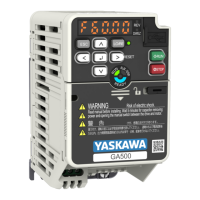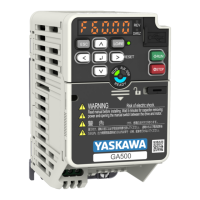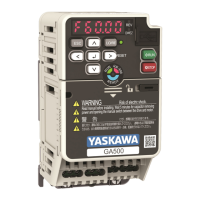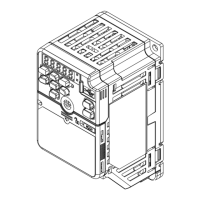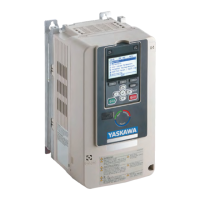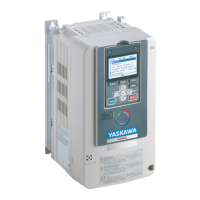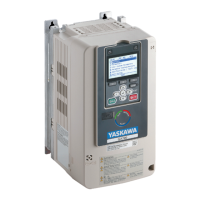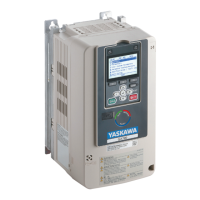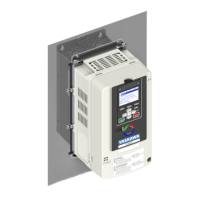2.3 b: Application
172 YASKAWA TOEPYAIGA5002A GA500 DRIVE PROGRAMMING
WARNING! Sudden Movement Hazard. Do not do Current Detection Speed Search with light loads or a stopped motor. If you do
Auto-Tuning in these conditions, the motor can suddenly accelerate and cause serious injury or death.
Note:
• You cannot use Current Detection Speed Search with PM motors.
• If the motor is rotating in reverse, you cannot do Speed Search.
• If the drive detects oL1 [Motor Overload] during Current Detection Speed Search, decrease b3-03.
• If the drive detects oC [Overcurrent] or ov [Overvoltage] during Current Detection Speed Search after the drive recovers from a
momentary power loss, increase L2-03.
■ Speed Estimation
Use this Speed Search function with induction motors. Set b3-24 = 1 [Speed Search Method Selection = Speed
Estimation]. This function uses less current and has a shorter search time than other functions. This function lets you
do Speed Search when the motor is rotating in reverse. When you return power after a power loss, the motor will not
suddenly accelerate.
Note:
You cannot do Speed Estimation Speed Search in these conditions:
• When You Operate More than One Motor with One Drive
• When you use a high-speed motor (120 Hz or higher)
• When you use a 1.5 kW or smaller motor.
• When the motor output is more than 1 frame size smaller than the drive capacity
• When there is a long wiring distance between the drive and motor
For these conditions, use Current Detection Speed Search.
Speed Estimation Speed Search uses these two steps to estimate the motor speed:
1. Residual Voltage Search
When there is a short baseblock time, the drive searches for residual voltage. The drive uses the residual voltage
in the motor to estimate the motor speed and direction of rotation. The drive outputs the estimated motor speed as
frequency, then uses the deceleration rate set in L2-04 to increase the voltage. When the output voltage aligns
with the V/f pattern, the drive accelerates or decelerates the motor to the frequency reference. If the drive cannot
estimate the motor speed because of low residual voltage, it will automatically do Current Injection.
Figure 2.17 Speed Search after Baseblock
Note:
After you return power, the drive waits for the time set in b3-05. If power loss is longer than the time set in L2-03, the drive will start Speed
Search when the time set in b3-05 is expired after the power recovery.
2. Current Injection
If there is not sufficient residual voltage in the motor, the drive does Current Injection. The drive injects the
quantity of DC current set in b3-06 [Speed Estimation Current Level 1] into the motor windings to estimate the
motor speed and direction of rotation. The drive outputs the estimated motor speed as frequency, then uses the
deceleration rate set in L2-04 to increase the voltage. When the output voltage aligns with the V/f pattern, the
drive accelerates or decelerates the motor to the frequency reference.
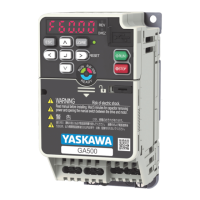
